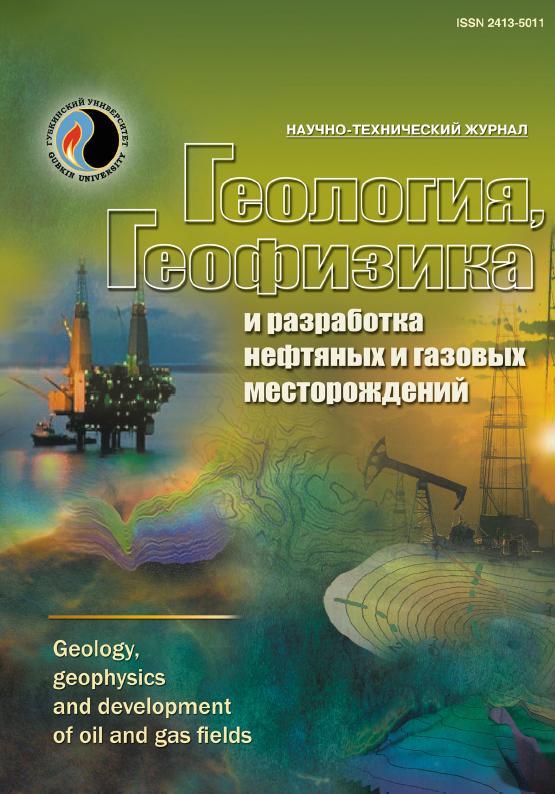Prospecting for new oil and gas fields applying the proven technology of quantum optical filtration of satellite images
UDC: 553.98(202)
DOI: 10.33285/2413-5011-2023-11(383)-62-67
Authors:
ROSTOVTSEV VITALIY V. 1
1,
ROSTOVTSEV VALERIY N. 2
2,
LEINWEBER ARTUR V.3,
LIPIKHINA EVGENIYA YU. 4
4
1 National Research Tomsk Polytechnic University, Tomsk, Russia
2 JSC "TOMKO", Tomsk, Russia
3 MGIMO, Moscow, Russia
4 JSC "TomskNIPIneft", Tomsk, Russia
Keywords: history of oil, prospecting for hydrocarbons, new technologies, quantum optical filtration, satellite images
Annotation:
The history of oil and gas exploration has several stages. Each of these stages was formed on the basis of knowledge in a certain period of time about oil, its properties, needs, technical capabilities of its prospecting and production. By the XXI century, oil and, later, gas, as energy and chemical raw materials, have become the basic ones for the economies of significant countries of the world. It became possible due to the fact that humanity has found ways to prospect for significant and gigantic reserves of these minerals, has learned how to efficiently extract and use them in energy and petrochemistry. Those huge hydrocarbon resources prepared by mankind in the XX century in various areas of the Earth, by the middle of the XXI century, and possibly earlier, due to the depletion of previously discovered and developed fields, and huge volumes of oil and gas use will begin to deplete. Their effective replenishment will be required. To a large extent, this task can and should be solved by a new technology of quantum optical filtration of satellite images, capable of identifying with high probability the boundaries of oil and gas fields, controlled by any type of deposits anywhere in the world and determining the location of the first prospecting well before seismic survey.
Bibliography:
1. Geologiya nefti. Spravochnik. T 2. Kn. 2 / Pod. red. I.V. Vysotskogo. – M.: Nedra, 1968. – 804 s.
2. Rey R.G., Fisher V.A. Kolichestvennaya fotografiya – instrument geologicheskogo issledovaniya. – Fotogr. angl. – 1960. – № 26(1). – Pp. 143–150.
3. Shuman V.N. Elektromagnitnye signaly litosfernogo proiskhozhdeniya v sovremennykh nazemnykh i distantsionnykh zondiruyushchikh sistemakh // Geofizicheskiy zhurnal. – 2007. – № 2. – S. 3–16.
4. Tarnovskiy E.I. Metod opredeleniya otnositel’nogo kolichestva i sostava faz uglevodorodnogo syr’ya neftegazokondensatnogo mestorozhdeniya // Problemy i puti effektivnogo osvoeniya mineral’no-syr’evykh resursov Sibiri i Dal’nego Vostoka: materialy yubileynoy nauch.-praktich. konf. // Trudy Vostokgazproma. – Tomsk, 2005. – S. 254–256.
5. Fivenskiy Yu.I. Ispol’zovanie materialov aerokosmicheskikh s"emok dlya izucheniya zemnoy kory // Geodeziya i kartografiya. – 2006. – № 1. – S. 44–52.
6. Novye perspektivnye ob"ekty dlya otkrytiya krupnykh mestorozhdeniy nefti i gaza na yugo-vostoke Tomskoy oblasti / V.V. Rostovtsev, E.Yu. Lipikhina, V.V. Leinweber, V.N. Rostovtsev // Geologiya nefti i gaza. – 2019. – № 2. – S. 63–71. – DOI: 10.31087/0016-7894-2019-2-63-71
7. Rostovtsev V.V. Perspektivy neftegazonosnosti yugo-vostoka Zapadno-Sibirskoy neftegazonosnoy provintsii. – Tomsk: Izd-vo TPU, 2012. – 240 s.

